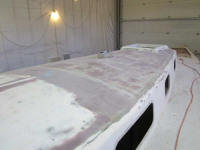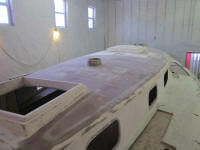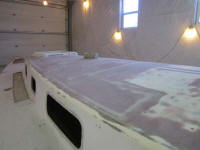
110 Cookson Lane | Whitefield, ME 04353 | 207-232-7600 | tim@lackeysailing.com
I began the day with a brief sanding session on the coachroof, wrapping up--for now--the work there. During a later stage of deck surface preparation, once I'd caught up the work on the sidedecks and cockpit, I'd finish up with finer sanding, but the surface was 95% there.
The main focus of the morning was to continue cleaning out the old core from around the edges of the foredeck and starboard sidedeck repairs. The areas with plywood were proving to be difficult to clean out when the overhang was too much, so as needed I extended the cutlines a bit further out to give me better access to remove the wet and partially delaminated plywood coring. I preferred to keep the adjacent flanges as wide as possible for strength while tying in the new laminate later, but getting the damaged core out was salient. Cutting an additional inch off the edge made the difference, and I cleaned out all the remaining plywood.
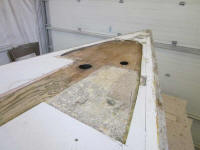
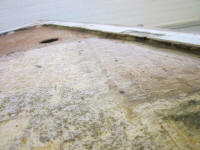
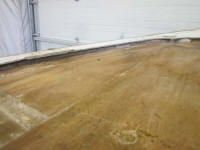
The port coaming block--a molded protrusion on the cabin trunk just forward of the cockpit--had been adversely affected during some previous repair (it appeared), and the lower portion was lumpy and bumpy. Additionally, getting the core out from beneath had forced me to cut the decks closer to the coaming block than I'd originally hoped; this issue repeated itself on the starboard side.
This combination, with what I saw as a need to better tie in the new deck laminate with its surrounds during the repair, led me to cut away the bottom inch or two of the coaming block on the port side, which worked so well that I did the same to starboard even though the molding there had not been damaged. Cutting away the lower section gave me clear access to remove final bits of old plywood that I'd not even known was in there, and would also give me the opportunity to fiberglass the area effectively. Once the decks were repaired, I could easily reshape and rebuild the lower portions of these blocks.
On the port side, this also gave me better access to patch a hole in the lower deck skin. Later, during the grinding step, I removed the yellowish-remnants of an old, ineffective repair just forward of the port coaming block.
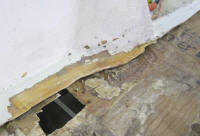
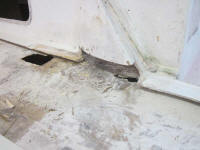
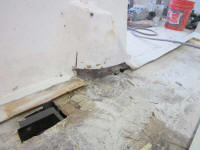
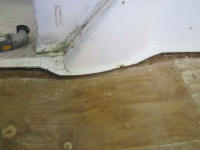
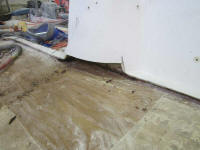
With the uncoring complete, I prepared all four areas on the sidedecks and foredeck for their repairs by grinding away the paint and gelcoat around the edges, tapering the adjacent laminate to accept the new repairs and tie everything together. With unseasonable temperatures reaching nearly 60° outside, I was able to open the shop door, making the grinding task almost pleasant. At the same time, I cleaned up the exposed inner deck skins, removing old resin and bits of core, and prepared the newly-cut coaming blocks for rebuilding and tying in.


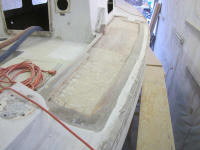
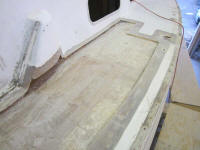
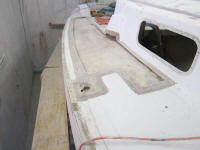
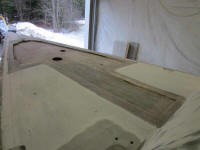
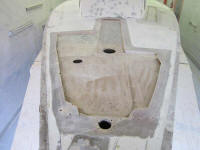
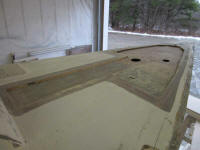
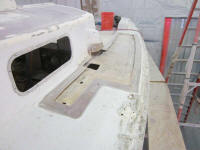
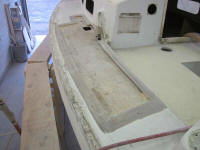
The foredeck and two large sidedeck areas would require some minor repairs to the inner skin before I could continue with the core installation, and I had new core ordered and on the way for those areas. However, I had enough 1/2" core on hand to do the smaller section of the port sidedeck, at the forward end, so with that task in mind for the near future, I sanded away all the old deck paint and molded nonskid surrounding the repair area, including the cabin trunk and the decks several inches in all directions (and out to the gunwale). This would ensure that the adjacent surfaces from which I'd refair the repair later would be at their desired heights, and would enable me to move forward with this part of the repair.
Later, I'd sand away all the other deck paint and nonskid, but that would be a continuing chore for another day.
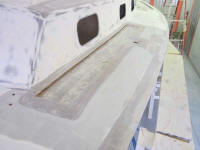
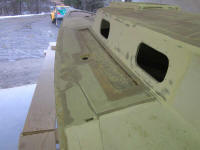
I wrapped up the day with a thorough clean-up of boat and shop.
Total Time on This Job Today: 7.5 hours

